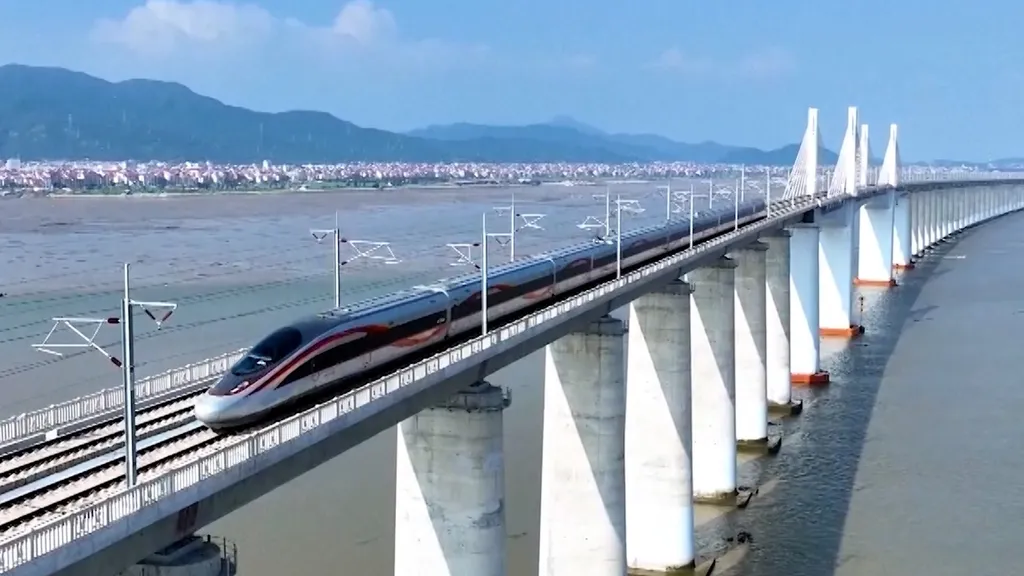In the realm of high-speed railway safety, a groundbreaking development has emerged that promises to revolutionize the way we detect and manage anomalies on catenary systems. Researchers have introduced a novel multimodal model called Railway-CLIP, designed to enhance the automated detection of suspended anomalous objects, a critical task for ensuring the safety of high-speed railway transportation. This innovation, led by Jiayu Zhang from the Beijing Key Laboratory of Traffic Data Analysis and Mining at Beijing Jiaotong University, leverages the power of both visual and textual data to achieve unprecedented levels of accuracy and reliability.
The Railway-CLIP model is a sophisticated integration of image and text encoders, drawing inspiration from the popular Contrastive Language-Image Pre-training (CLIP) model. “By employing contrastive learning, Railway-CLIP can simultaneously understand and process both visual and textual modalities,” explains Zhang. This dual approach allows the model to extract rich, multimodal features that significantly improve the detection of foreign objects on catenary systems.
The process begins with the Segment Anything Model (SAM), which preprocesses raw images to identify candidate bounding boxes that may contain foreign objects. These images and bounding boxes are then fed into the image encoder to extract visual features. Concurrently, distinct prompt templates are crafted for both the original images and the candidate bounding boxes, serving as textual inputs. These prompts are processed by the text encoder to derive textual features. The image and text encoders work collaboratively to project the multimodal features into a shared semantic space, enabling the computation of similarity scores between visual and textual representations. The final detection results are determined based on these similarity scores, ensuring a robust and accurate identification of anomalous objects.
The impact of this research on the energy sector, particularly in high-speed railway systems, is substantial. High-speed railways rely heavily on catenary systems for power supply, and any anomalies or foreign objects can pose significant safety risks and operational disruptions. The Railway-CLIP model’s ability to detect these anomalies with high accuracy can lead to improved safety, reduced downtime, and enhanced efficiency. “Our extensive experiments on the Railway Anomaly Dataset (RAD) have demonstrated that Railway-CLIP outperforms previous state-of-the-art methods, achieving 97.25% AUROC and 92.66% F1-score,” Zhang notes. This level of performance validates the effectiveness and superiority of the proposed approach in real-world high-speed railway anomaly detection scenarios.
The research, published in the journal *High-Speed Railway* (translated from Chinese as *高速铁路*), highlights the potential for future developments in the field. As high-speed railways continue to expand globally, the need for advanced detection systems becomes increasingly critical. Railway-CLIP’s multimodal approach could set a new standard for anomaly detection, inspiring further innovations in the integration of visual and textual data for enhanced safety and efficiency.
In conclusion, the introduction of Railway-CLIP represents a significant leap forward in the realm of high-speed railway safety. By harnessing the power of multimodal models, researchers have developed a tool that not only improves detection accuracy but also paves the way for future advancements in the field. As the energy sector continues to evolve, the integration of such technologies will be crucial in ensuring the safe and efficient operation of high-speed railway systems worldwide.

